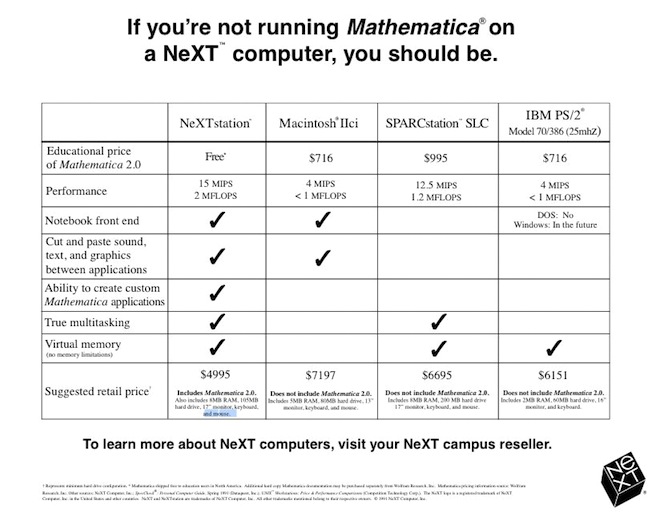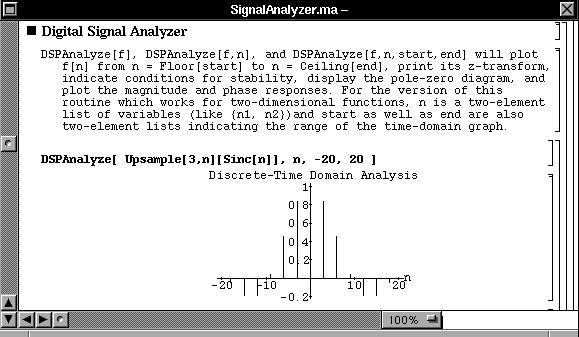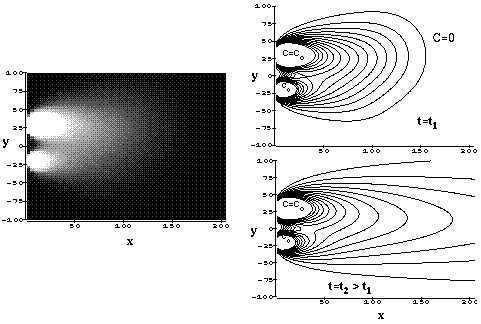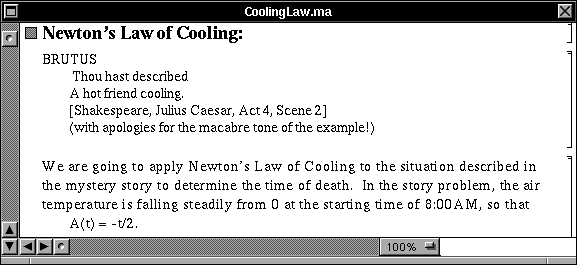Mathematica for Education
Mathematica was free with every NeXT computer purchased in higher education. The NeXTstep interface, workstation power, multitasking, and virtual memory made NeXT the ultimate Mathematica platform.
Read the followiung position papers from NeXT:
Mathematica brings new understanding to teaching and research
NeXTstep-The Ideal Platform for Mathematica
How do NeXT computers compare to other Mathematica computers? See this:

At the Georgia Institute of
Technology, instructors developed Mathematica packages and
instructional Notebooks for signal processing. The packages
implement Laplace, Fourier, z, discrete Fourier, and
discrete-time Fourier transforms.

For more information, contact:
Brian L. Evans
Graduate Research Assistant in Electrical Engineering
evans@eedsp.gatech.edu, (404) 894-2910
At the University of North Carolina, Chapel Hill,
Mathematica's ability to handle complex calculations and
help students visualize the results has let Professor Rial
teach geomathematics to undergraduate students.

The graphs above show analytic solutions to the
dispersion-advection equation that simulates the dispersion
and transport of pollutants through an aquifer.
Mathematica helps researchers, instructors, and students
visualize complex mathematical relations. Its powerful and
flexible graphics capabilities make Mathematica an
invaluable tool not only for the mathematical sciences but
the natural and physical sciences as well.
Here is a description of the Geomathematics course
Mathematica-HeatConduction
for more information contact:
Jose A. Rial
Associate Professor of Geophysics
jar@antipode.geosci.unc.edu, (919) 966-4553
Newton's Cooling Law Numerical ODE Orthogonal Trajectories
Series Solutions Resonance

At the University of Nebraska, Lincoln, instructors used
Mathematica to teach advanced mathematics with real-world
examples. In the Matehematica Notebook above, students use
Newton's law of cooling to solve a murder mystery.
Using Mathematica, instructors could teach advanced
concepts with engaging real-world examples rather than
trivial exercises. Lecture notes and lessons that combine
text, graphics, sounds, animations, and Mathematica code
were organized in structured documents called Notebooks.
If you had Mathematica and want to solve a murder mystery,
read some notebooks
For more information, contact:
Steven Dunbar
Professor of Electrical Engineering
srd@mathcml.unl.edu, (402) 472-7236

